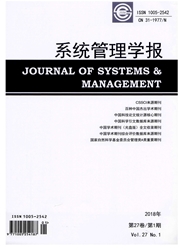

 中文摘要:
中文摘要:
在前景理论框架下,构建基于动态损失厌恶心理特征的多阶段损失厌恶投资组合优化模型,进一步,以我国股票市场为依托,考虑未来资产收益的不确定性,对该模型进行实证研究。将多阶段损失厌恶模型与多阶段均值-方差模型在最优期末财富和资产配置比例方面进行比较,分别改变初始损失厌恶系数和初始参照点对损失厌恶模型进行稳健性检验。得出结论:多阶段损失厌恶模型具有很好的稳健性,与多阶段均值-方差模型相比,最优期末财富较高、资产配置相对集中。
 英文摘要:
英文摘要:
Under the framework of prospect theory, the multi-period loss aversion portfolio model is constructed based on the psychological characteristics of dynamic loss aversion. Furthermore, based on the stock market and considering the uncertainty of return of all assets, we empirically investigate the model and compare it with multi-period mean-variance model with regard to optimal final wealth and asset allocation ratio. Changing the initial loss aversion coefficient and initial reference point respectively, we do robustness check on the multi-period loss aversion portfolio model. The conclusion is that compared with multi-period mean-variance model, multi-period loss aversion portfolio model is robust, leading to more optimal final wealth and concentrated asset allocation.
 同期刊论文项目
同期刊论文项目
 同项目期刊论文
同项目期刊论文
 期刊信息
期刊信息
